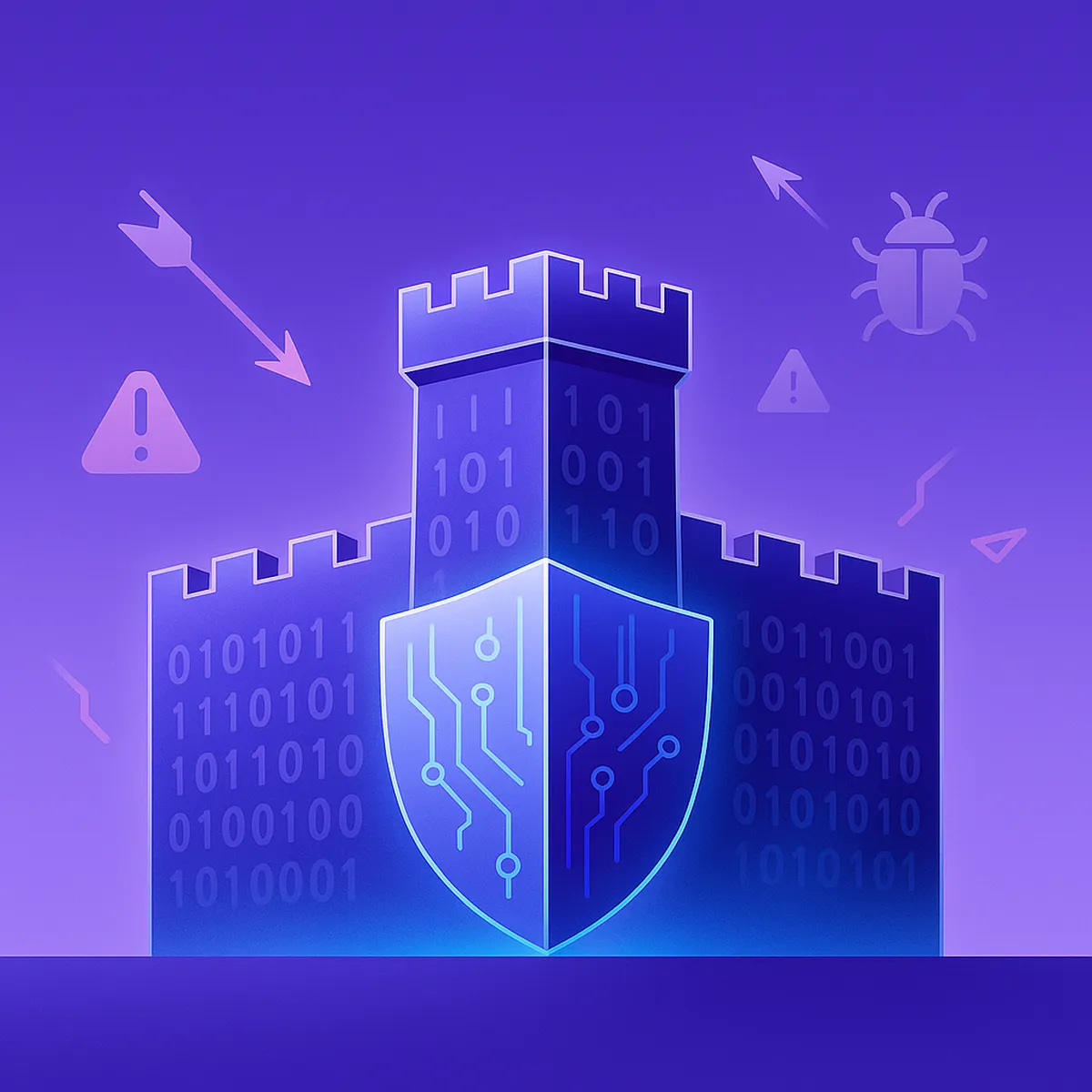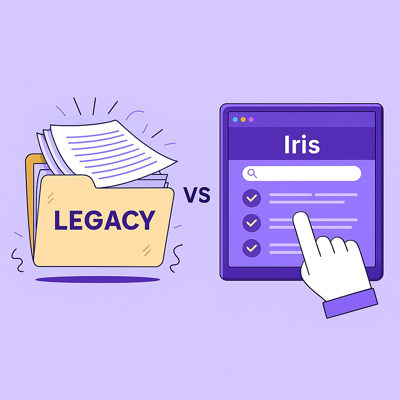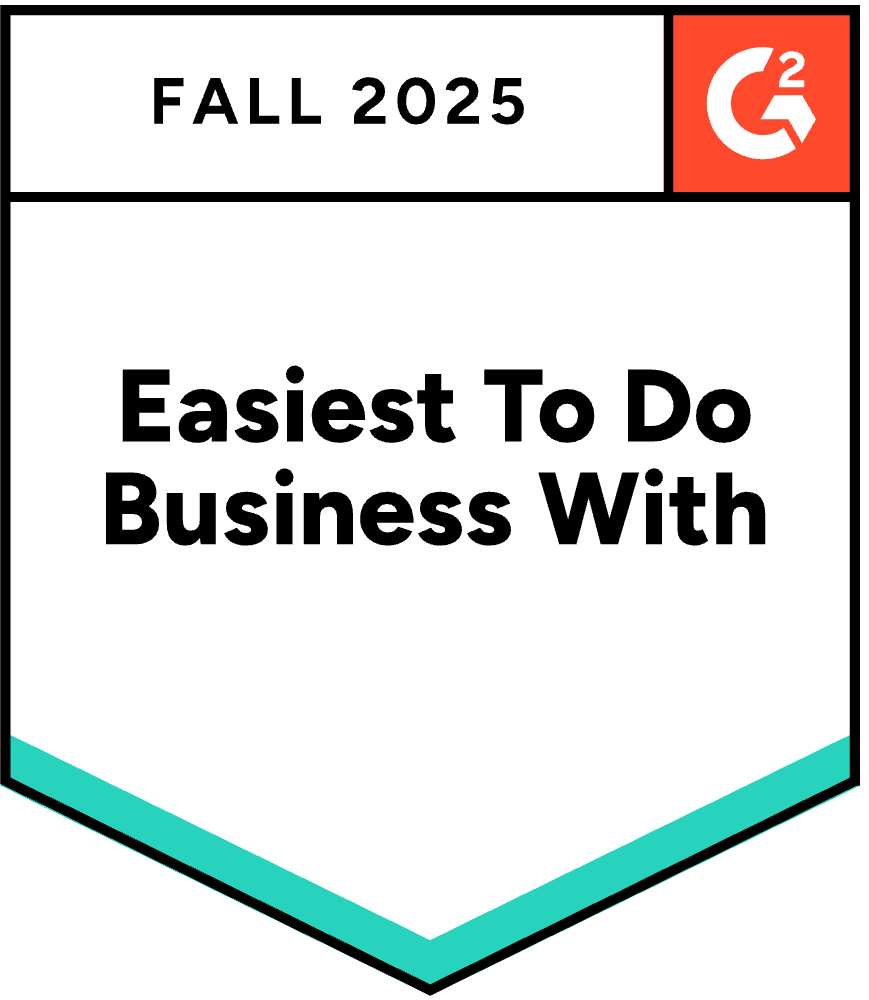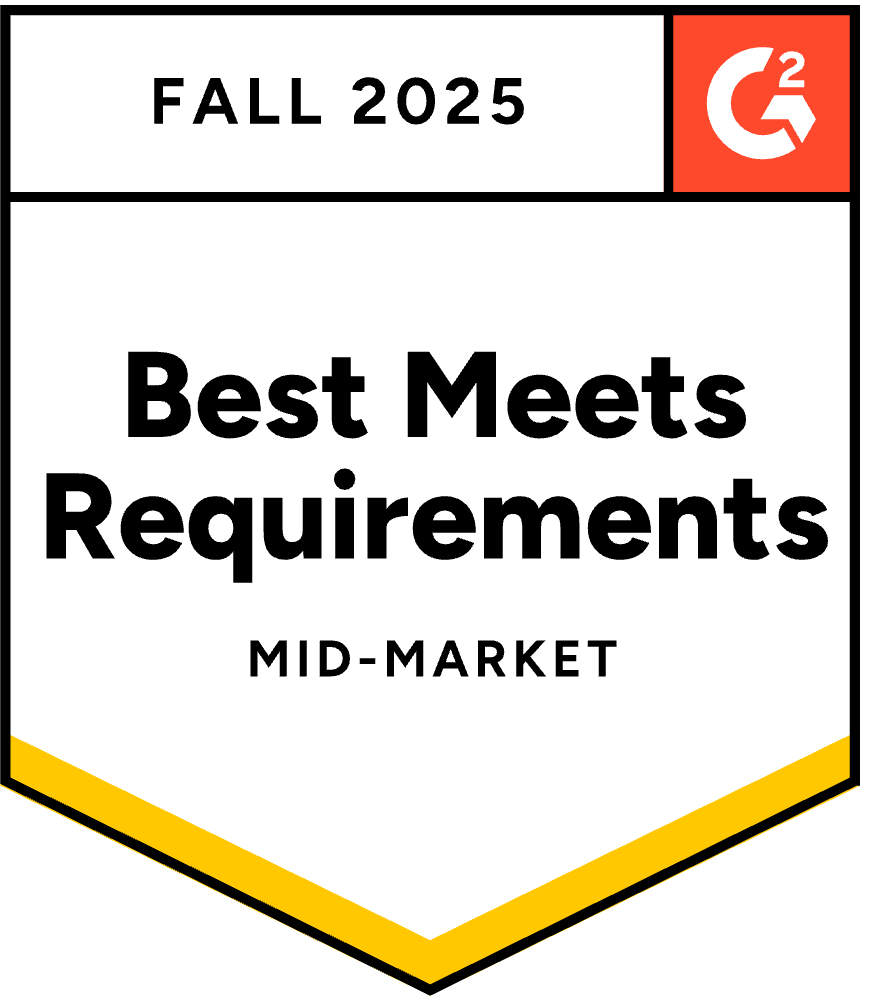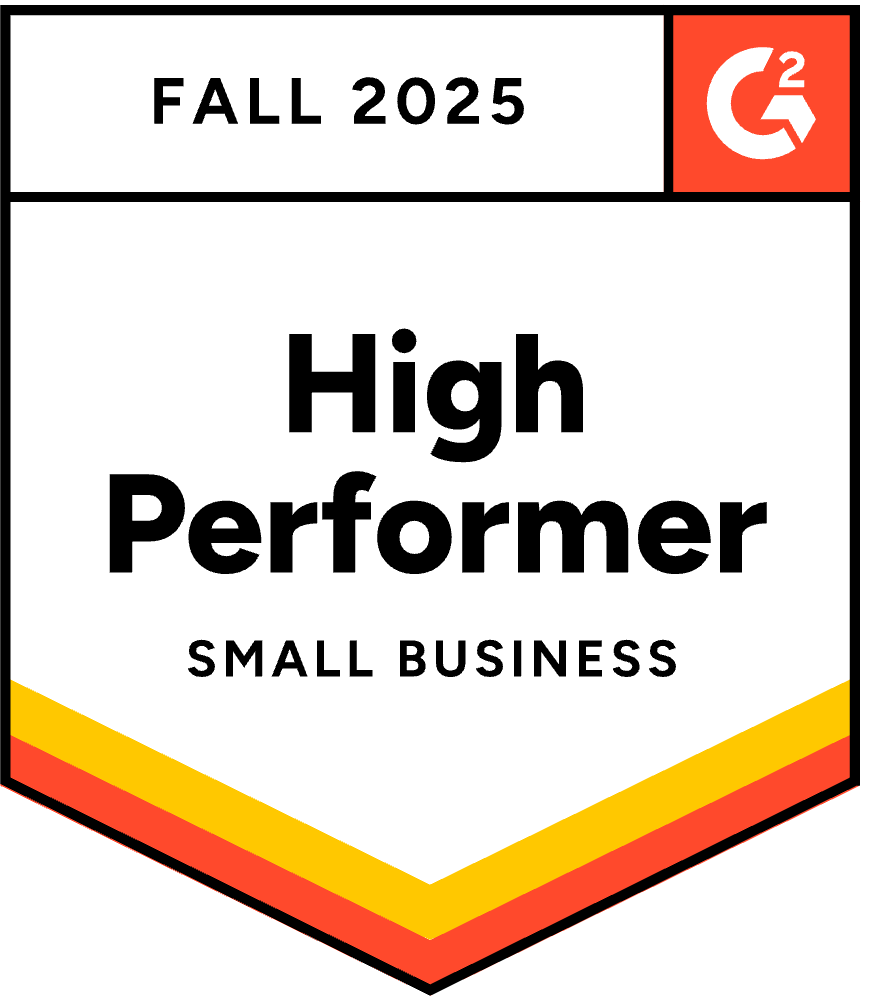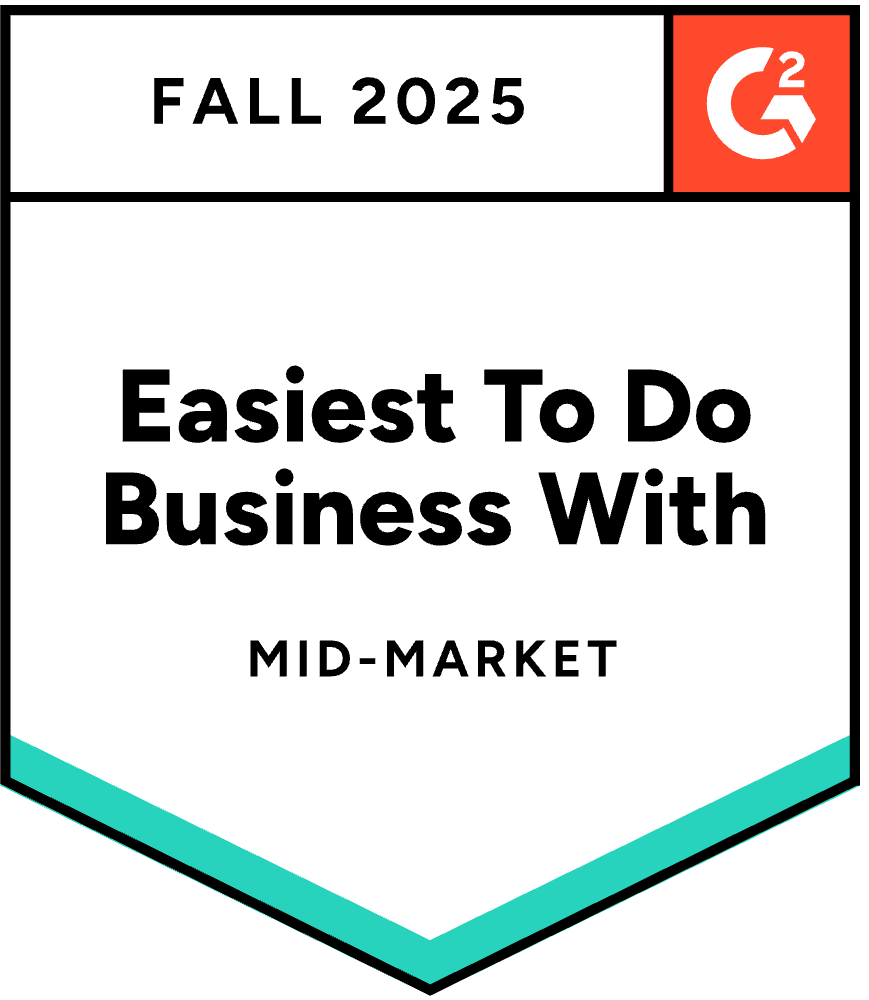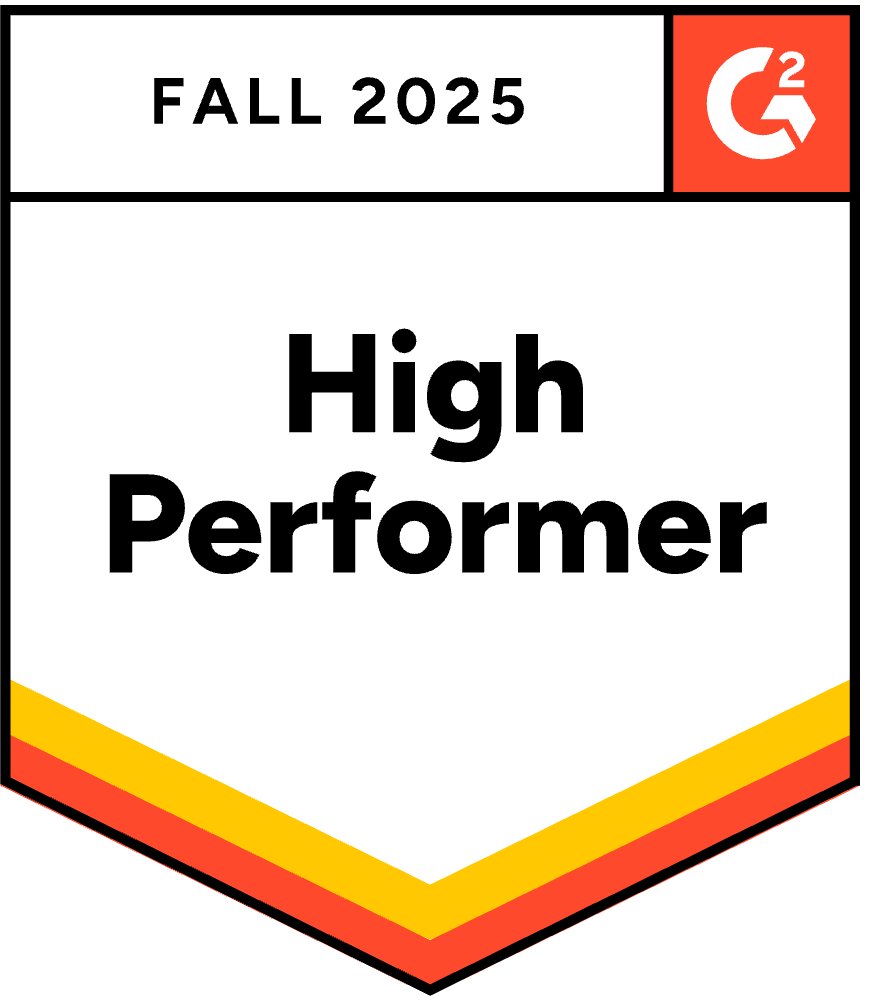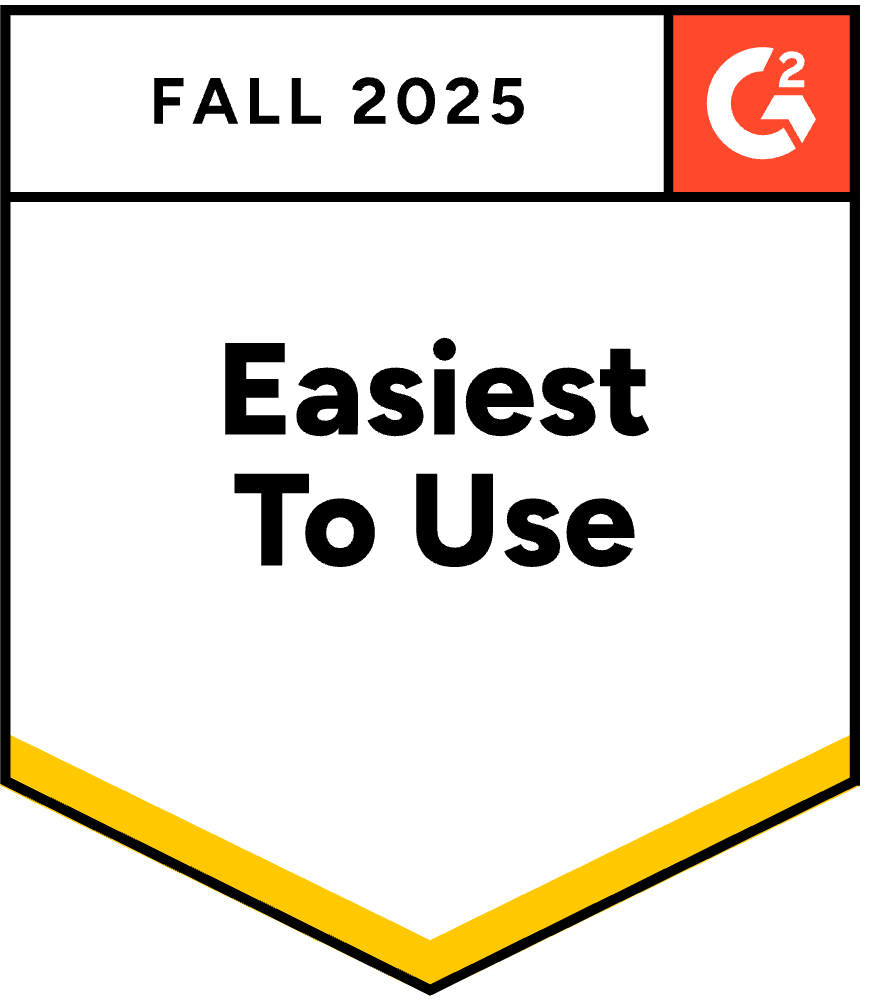The Best AI Tool for Sales Proposals: A Full Review
August 12, 2025
By
Evie Secilmis
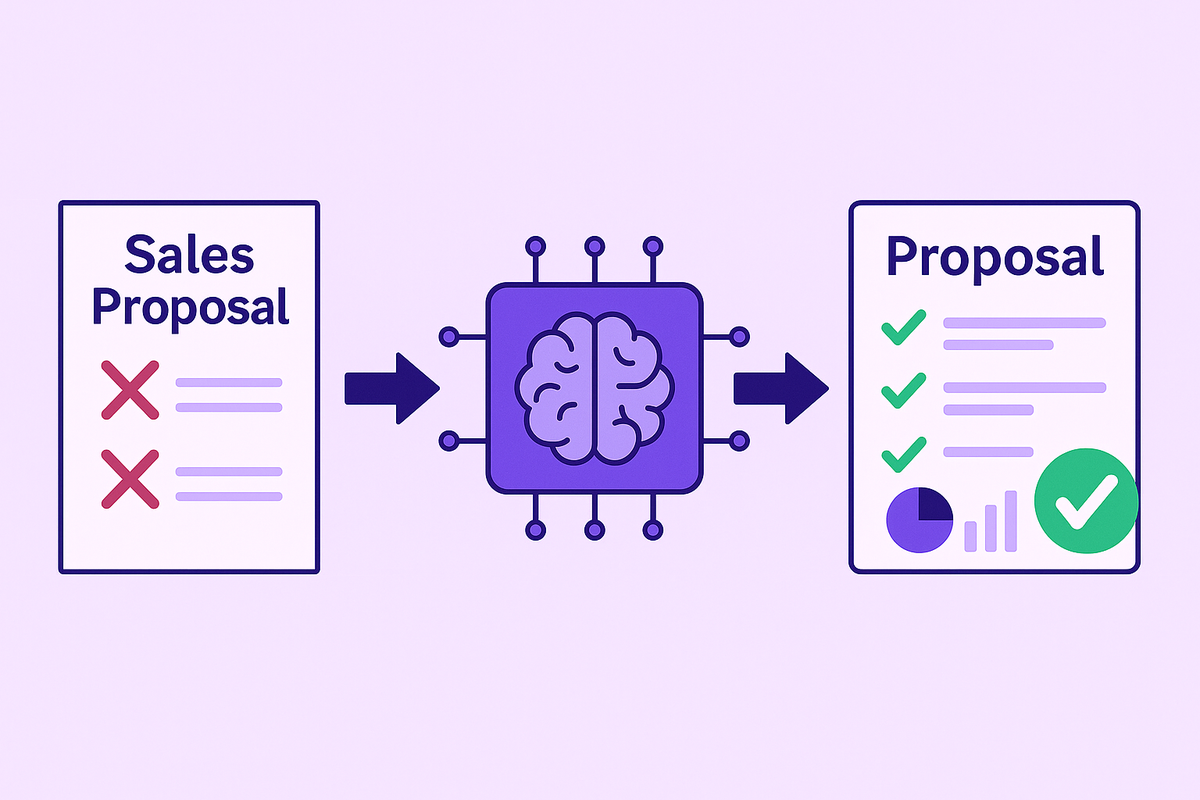
A winning proposal feels personal. It shows the client you’ve listened to their unique challenges and crafted a solution just for them. But achieving that personalization at scale feels impossible when your team is buried in manual work. This is where ai-enhanced sales proposals come in. It may seem counterintuitive, but the best AI tool for sales proposals is one of the most effective ways to deliver highly personalized documents, consistently. The right platform handles the heavy lifting—pulling accurate data and relevant case studies—so your team can add that critical human touch and build stronger client connections.
Key Takeaways
- Shift your team from manual work to strategic selling: Implement AI to automate the tedious parts of proposal writing. This frees your sales professionals to focus their energy on crafting compelling narratives and personalizing the offers that actually win deals.
- Curate your content for consistent wins: Your AI is only as good as the information it uses. Invest time in creating a centralized knowledge base with your best-performing, approved content to ensure every proposal is accurate, on-brand, and built for success.
- Let data guide your proposal strategy: Move beyond guesswork by tracking key performance indicators (KPIs) like win rate and team efficiency. Analyzing this data helps you identify your strongest content and pinpoint areas for improvement, leading to better outcomes.
The Anatomy of a Winning Sales Proposal
A great sales proposal does more than just list prices and features; it tells a story. It shows your potential client that you truly understand their challenges and have the perfect solution to help them succeed. Think of it as a critical conversation piece that can make or break a deal. When you get it right, you build trust, demonstrate your value, and make it easy for them to say "yes." But to do that, you need to include the right ingredients and avoid some common pitfalls.
What Every Great Proposal Includes
Every winning proposal is built on a solid foundation. Start with a clear introduction that sets the stage. Then, articulate the client's problem statement to show you've been listening. From there, present your proposed solution, detailing not just what it is, but how it will work with a clear implementation timeline. Be transparent with your pricing and payment terms. The most persuasive proposals also include success stories or case studies as social proof and a clear breakdown of the return on investment (ROI) the client can expect. Finally, wrap up with clear next steps so they know exactly what to do.
Avoid These Common Proposal Pitfalls
If your team is still building proposals manually, you’ve likely run into a few familiar frustrations. The process can be incredibly time-consuming, with sales reps spending hours hunting for information and piecing documents together. This slows down your response time and can cost you opportunities. Manual work also opens the door to human error—a typo in the pricing or an outdated product detail can damage your credibility. Without a standardized process, you also risk sending inconsistent proposals that look and feel different every time, which can confuse clients and weaken your brand's professional image. These roadblocks aren't just annoying; they directly impact your bottom line.
Personalization: Your Secret to Winning More Deals
A generic, one-size-fits-all proposal rarely closes a deal. The key is to personalize it. This means going beyond just adding the client’s name; it’s about showing you understand their unique needs and tailoring your solution to solve their specific problems. Accuracy is just as crucial. An error-free proposal with up-to-date information shows you’re professional and trustworthy. This is where modern tools can make a huge difference. An AI-powered platform can help you generate highly accurate first drafts by pulling from a library of your best, most current content, ensuring every proposal you send is both personal and polished.
How AI Is Changing the Game for Sales Proposals
Think of AI as your team's new strategic partner, not just a fancy spell-checker. It fundamentally changes the proposal writing process from a reactive, time-consuming task into a proactive, revenue-driving activity. Instead of getting bogged down by manual work, your team can focus on what truly matters: crafting a compelling story that wins the deal. AI handles the heavy lifting, from making sense of complex documents to ensuring every proposal is polished and on-brand, giving your team the space to be brilliant.
The Real-World Impact on Win Rates and Speed
Let's talk numbers, because they tell a powerful story. The shift to AI-driven proposals isn't just about convenience; it's about gaining a serious competitive edge. Sales teams that use proposal software see their chances of winning deals go up by an average of 59%. Imagine closing over half of the deals you were previously losing. This isn't just a small improvement; it's a transformation. And it happens because you can respond with incredible speed without sacrificing quality. Instead of days, think minutes. Some teams are now creating polished, personalized proposals in 17 minutes or less. When you can be the first high-quality proposal in a client's inbox, you set the standard and immediately position yourself as the front-runner.
So, how does this happen? The magic is in the system. An AI platform like Iris acts as your team's single source of truth, creating a central library for all your best content, case studies, and approved answers. When a new RFP or SOW comes in, the AI instantly pulls the most relevant, accurate information to build a solid first draft. This process not only saves countless hours but also dramatically improves outcomes—some users even see their close rate double the industry average. By automating the foundational work, your team can stop searching for information and start focusing on the strategic personalization that makes a proposal impossible to ignore. It’s about working smarter, not harder, to deliver winning documents every single time.
How AI Makes Sense of Complex Requirements
Let's be honest: some RFPs are monsters. They're dense, packed with jargon, and can take hours to simply decode. AI helps you cut through the noise. It can quickly scan a document, identify the core requirements, flag potential deal-breakers, and even score the opportunity against your ideal customer profile. This initial analysis is a game-changer. It allows your team to quickly decide whether to bid and helps you focus on high-impact deals instead of wasting cycles on RFPs that aren't a good fit from the start. Your experts can then apply their strategic thinking to the most promising opportunities.
Create Accurate First Drafts in Minutes
Staring at a blank page is a huge time-sink. With the right tool, you can use AI to generate a first draft in minutes, not hours. This isn't about creating generic, robotic content. A smart AI system pulls from your company's central knowledge base—a library of your best, pre-approved answers, case studies, and security information. The result is a solid, relevant draft that's already tailored to the specific RFP. This frees your team from the tedious copy-and-paste work and lets them jump straight into the most important part: refining the narrative and personalizing the proposal to connect with the client.
Keep Your Proposals Consistent and On-Brand
When multiple people contribute to a proposal, maintaining a consistent voice and quality can be tough. AI acts as your brand's guardian. It ensures every response aligns with your company's messaging, tone, and formatting guidelines. More importantly, it can proactively identify and flag outdated information across your content library, so you never accidentally send a client old pricing or product details. This level of quality control builds trust and credibility. It helps position their teams as strategic contributors who consistently deliver polished, accurate, and persuasive proposals that drive business forward.
Different Ways AI Can Build Your Proposal
AI isn't a one-size-fits-all solution; it's a versatile toolkit that can adapt to your team's specific needs and starting points. Whether you're working with a library of old sales documents, a pile of raw data, or a collection of past wins, AI offers a pathway to a polished, persuasive proposal. The key is to understand the different ways you can apply this technology. Some tools focus on transforming your existing materials into something new and professional, while others help you build a compelling narrative from scratch. By exploring these methods, you can find the right approach to streamline your workflow and create proposals that truly stand out.
From Existing Documents to Branded Templates
Your team likely has a treasure trove of content locked away in old PDFs and Word documents. Instead of letting that valuable information gather dust, you can use AI to give it a new life. Some AI tools are designed to ingest these plain files and intelligently reformat them into modern, professional templates that align with your brand. This process saves countless hours that would otherwise be spent on manual design and layout work. It ensures that even when you're repurposing older content, the final proposal looks fresh, polished, and completely on-brand, helping you make a strong first impression every time.
From Raw Data to Compelling Visuals
A wall of text can be overwhelming for a potential client. The most effective proposals often use visuals to break down complex information and tell a more engaging story. This is another area where AI can lend a hand. AI-powered tools can help organize your ideas clearly and transform raw data—like project timelines, pricing breakdowns, or ROI projections—into compelling, easy-to-read visuals. It can suggest the best way to present your information, whether through a simple chart or a more detailed infographic. This approach makes your proposal not just informative but also memorable, ensuring your key points resonate with the client long after they've finished reading.
From Past Proposals to New Drafts
The most powerful approach is to use AI to learn from your past successes. Instead of starting from scratch, a sophisticated AI system can generate a complete first draft by pulling from a centralized knowledge base. This isn't just a simple copy-and-paste job. At Iris, our platform helps you build a library of your best, pre-approved answers, case studies, and security information. When a new RFP comes in, the AI intelligently selects the most relevant content to create a highly accurate and tailored draft in minutes. This allows your team to skip the tedious assembly work and focus their expertise on refining the strategy and personalizing the proposal to win the deal.
Choosing the Best AI Tool for Sales Proposals
Choosing the right AI proposal software is about more than just finding a tool that can string sentences together. The goal is to find a partner that integrates into your workflow, strengthens your brand, and gives you the insights needed to win more deals. When you’re evaluating your options, it’s easy to get distracted by flashy features. Instead, focus on the core capabilities that will actually make a difference for your sales team. A great platform should feel like an extension of your team—one that handles the tedious work so your people can focus on strategy and relationships. Look for a solution that not only automates tasks but also makes your entire proposal process smarter, faster, and more secure.
How to Select the Right Tool for Your Team
The best tool for your team is one that fits your specific workflow, not the other way around. Before you get swayed by a long list of features, take a step back and think about your team's day-to-day reality. How many proposals do you send? How complex are they? What other software do you rely on, like a CRM? Answering these questions will help you create a shortlist of platforms that genuinely solve your problems. The right software should feel like a natural extension of your team, helping you work faster and smarter without adding unnecessary complexity to your process.
Matching Features to Your Team Size
Your team's size and structure play a huge role in what you'll need from an AI proposal tool. A small, agile team might prioritize a platform with a wide variety of ready-made templates and a simple user interface to get up and running quickly. In contrast, a large enterprise sales team will have different priorities. They'll need robust security features, advanced user permissions, and seamless CRM integrations to manage a high volume of complex deals. For them, a tool's ability to maintain a secure, centralized knowledge base and handle intricate documents like RFPs and DDQs is non-negotiable.
Using Customer Reviews to Guide Your Choice
Marketing materials will always show a product in its best light. To get the real story, you need to see what actual users are saying. Dive into customer reviews on sites like G2 and Capterra. Look for patterns in the feedback. Are people consistently praising the customer support? Do they mention a steep learning curve? Customers often highlight the specific features that make a real difference in their daily work, like a tool's tracking features or its professional-looking templates. This firsthand insight is invaluable for understanding how a tool performs in the real world and can help you avoid a solution that looks great on paper but fails in practice.
A Look at Popular AI Proposal Tools
The market for AI proposal software is growing, with different platforms designed to meet different needs. Some are built for speed and simplicity, perfect for straightforward sales quotes, while others are engineered to handle the complexity of enterprise-level RFPs. Understanding the landscape will help you narrow down your options and find a tool that aligns with the types of documents your team creates. Here’s a quick look at a few popular options and who they’re best suited for, so you can see where your team might fit in.
For Small to Medium Teams
If you're on a small or medium-sized team, you likely need a tool that's both powerful and easy to adopt. Platforms like Proposify are often a great fit. They typically offer a strong content library, a variety of professional templates, and essential features like electronic signatures and payment processing. The focus is on helping you create polished, branded proposals quickly without needing a dedicated administrator to manage the system. These tools are designed to streamline the sales process so your team can spend less time on paperwork and more time actually selling.
For Large Enterprises
Large enterprises face a unique set of challenges, including brand consistency, data security, and collaboration across multiple departments. Tools like GetAccept are built with these needs in mind, offering deep integrations with enterprise-grade CRMs and advanced analytics. For teams that regularly respond to complex RFPs, RFIs, and security questionnaires, a specialized AI deal desk solution becomes critical. These platforms focus on creating a single source of truth for company information, ensuring every proposal is accurate, secure, and perfectly on-brand, no matter how many people are involved in its creation.
For Freelancers and Solopreneurs
When you're running the show on your own, efficiency and affordability are everything. As a freelancer or solopreneur, you need a tool that helps you look professional and win business without breaking the bank or demanding hours of setup. Many platforms offer plans tailored to individuals, focusing on core features like proposal creation, e-signatures, and basic tracking. The goal is to find a simple, intuitive tool that lets you create impressive proposals in minutes, so you can compete with larger players and focus on delivering great work for your clients.
Understanding Pricing Models and Free Trials
Pricing for AI proposal software can vary quite a bit, so it’s important to understand what you’re paying for. Many platforms charge on a per-user, per-month basis, which is straightforward but can get expensive as your team grows. Others might offer usage-based pricing, which can be more cost-effective if your proposal volume fluctuates. Almost every tool offers a free trial, and you should absolutely take advantage of it. For example, Proposify offers a 14-day trial. Use this time to have your team build a real proposal in the platform. This hands-on experience is the best way to see if a tool truly fits your workflow before you commit.
A Smart, Searchable Content Library
Think of a smart content library as your team’s single source of truth. It’s a centralized, AI-powered knowledge base that stores all your approved answers, case studies, product descriptions, and security information. Instead of writing the same response for the tenth time or hunting through old documents for the right paragraph, your team can rely on the AI to find and suggest the perfect, pre-approved content. This is a game-changer for maintaining consistency and accuracy across all your proposals. A powerful AI platform doesn’t just store information; it understands context, ensuring that every proposal is built from your best and most current material, which drastically cuts down on review cycles and human error.
Tools to Keep Your Proposals On-Brand
Your proposal is often a potential client’s first tangible experience with your brand, and you want it to make a great impression. A generic, poorly formatted document can undermine even the most compelling offer. That’s why it’s essential to choose AI software that gives you full control over customization and branding. The right tool will allow you to easily apply your company’s logo, color palette, and fonts to create polished, professional proposals that look like they were crafted by a design team. This consistency not only reinforces your brand identity but also builds a sense of trust and credibility with your prospects from the very first page.
Integrations That Simplify Your Workflow
An AI proposal tool that doesn’t connect with your other systems isn’t a solution—it’s just another silo. To get the most value, look for software that offers seamless integrations with the tools your team already uses every day, especially your CRM. When your proposal software can talk to platforms like Salesforce or HubSpot, it can pull the latest customer data directly into your documents. This ensures every proposal is personalized and accurate without manual data entry. Powerful integrations also streamline your workflow by connecting different parts of your sales process, from initial contact to final signature, creating a more efficient and cohesive operation for your entire team.
Track What Works with Built-in Analytics
How do you know if your proposals are actually effective? If you’re just sending documents into the void, you’re missing out on crucial insights. Top-tier AI proposal software comes with built-in analytics and tracking features that give you a clear view of your performance. You can see who opened your proposal, which sections they spent the most time on, and what your overall win rate is. This objective data helps you move beyond guesswork. You can identify your strongest content, pinpoint areas for improvement, and make strategic decisions to refine your approach. Analyzing these key metrics is essential for coaching your team and consistently improving your outcomes over time.
Keep Your Data Safe and Compliant
For many businesses, especially those in regulated industries like finance, healthcare, or government contracting, security and compliance are non-negotiable. Manually reviewing every proposal to ensure it meets strict company standards and legal requirements is not only time-consuming but also leaves you vulnerable to costly mistakes. Look for AI software with automated compliance checks built directly into the workflow. These features act as a critical safety net, flagging any content that doesn’t meet predefined rules. This provides an essential layer of security, reduces risk, and ensures every proposal you send is accurate and compliant. A comprehensive AI deal desk should make this a core part of its functionality.
AI Proposal Software vs. General AI Tools
With all the buzz around generative AI, it’s tempting to think a tool like ChatGPT can handle all your writing needs, including sales proposals. And while these general AI models are incredibly powerful for brainstorming or drafting an email, they aren’t built for the specific, high-stakes task of creating a document that can win or lose you a major deal. The difference comes down to using the right tool for the job. A generalist AI is like a multi-tool—handy in a pinch, but you wouldn’t use it to build a house. For something as critical as a proposal, you need a specialized instrument designed for precision, accuracy, and security.
Limitations of Using General AI like ChatGPT
While impressive, general AI tools have some serious blind spots when it comes to the detailed work of proposal writing. They weren't designed to handle your company's sensitive, specific data, which creates a couple of major hurdles. These platforms are trained on broad, public internet data, which means they lack the context and confidentiality needed to produce a document that truly represents your business and protects your information. Relying on them for the entire process can introduce risks and inefficiencies that a purpose-built platform is designed to eliminate.
Challenges with Financial Details and Data Accuracy
ChatGPT is not a financial analyst. Asking it to create detailed budgets, pricing tables, or cash flow statements is a recipe for trouble. These models simply don't have access to your internal pricing structures, client history, or specific product configurations. You'll find yourself exporting its generic text and manually plugging in the numbers in a spreadsheet anyway, which adds steps back into the process you were trying to automate. A specialized tool, on the other hand, can integrate with your systems to pull accurate, real-time data, ensuring your financial sections are both precise and professional.
Lack of Verifiable Sources
This is a big one. When you ask a general AI for information, it often can't tell you where it got its facts. This "black box" approach is a huge risk in a sales proposal, where every claim needs to be backed up and every detail must be accurate. You can't afford to present information you can't verify. This is a stark contrast to an AI proposal platform that operates from your own curated knowledge base. With a dedicated system, you know every piece of information is sourced from your approved, fact-checked content, eliminating the guesswork and protecting your credibility.
Tips for Using General AI Effectively
If you are going to use a general AI tool as part of your process, it’s important to know how to work with it to get the best possible results. These tools can be helpful for overcoming writer's block or drafting initial ideas, but they require a specific approach. Think of it less as a proposal writer and more as a writing assistant that needs clear, careful direction to be truly useful. By understanding its strengths and weaknesses, you can use it to supplement your workflow without letting it introduce errors or inconsistencies into your final document.
Break Down Your Request into Smaller Pieces
Don't try to eat the whole elephant at once. Asking ChatGPT to "write a sales proposal" will give you a generic, unusable template. Instead, break your request into much smaller, more specific prompts. For example, ask it to "write three introductory sentences for a proposal to a healthcare company" or "summarize the benefits of our software for a non-technical audience." This piecemeal approach gives you more control and produces higher-quality content, but it also highlights the manual effort required to stitch everything together into a cohesive final document.
Write the Executive Summary Last
This is a classic piece of writing advice that holds true for working with AI. The executive summary is meant to be a concise overview of your entire proposal, so it should always be written last. Once you've assembled all the other sections—the problem statement, your solution, the pricing, and the implementation plan—you can then use a general AI to help you draft a summary of the completed work. This ensures the summary accurately reflects the final document and provides a powerful, high-level overview for busy decision-makers.
Practical Ways to Use AI in Your Proposal Process
Integrating AI into your proposal workflow isn't about replacing your team's expertise; it's about amplifying it. Think of AI as a powerful assistant that handles the time-consuming, repetitive parts of proposal creation, freeing your team to focus on strategy, personalization, and building client relationships. Instead of getting bogged down by searching for the right information or formatting documents, your team can spend their energy on what truly matters: crafting a compelling story that wins the deal.
By automating routine tasks and providing data-driven insights, AI transforms the entire process from a manual chore into a streamlined, strategic function. This shift allows you to respond to more opportunities with higher-quality proposals, all without burning out your team. The right AI deal desk solution centralizes your efforts, making collaboration smoother and ensuring every proposal you send is accurate, consistent, and perfectly tailored to the client's needs. It’s about working smarter, not just faster, to improve your win rates and drive growth.
Stop Writing the Same Thing Over and Over
Every sales team knows the drill: copying and pasting company boilerplate, standard security answers, and product descriptions into yet another proposal. It’s tedious and leaves room for error. AI completely changes this by automating the generation of repetitive content. The system can instantly pull the most current and approved answers from your knowledge base, populating sections of your proposal in seconds. This means your sales team can spend less time on administrative work and more time customizing the parts of the proposal that require a human touch, like the executive summary and solution overview. This automation not only saves countless hours but also ensures consistency across all your documents.
Use Data to Write Smarter Proposals
Your past proposals are a goldmine of data, but manually analyzing them is nearly impossible. AI can sift through your entire history of wins and losses to uncover valuable patterns. It can identify which pieces of content are most frequently used in winning proposals and which answers correlate with success for specific industries or client types. These insights from your sales data help you refine your content strategy over time, making each new proposal stronger than the last. Instead of relying on guesswork, your team can make data-backed decisions about what information to include, giving you a clear competitive edge and helping you tailor your messaging for maximum impact.
Finally, a Simple Way to Manage Templates
Keeping proposal templates current and consistent across a growing team can be a major challenge. Outdated branding, old product information, or incorrect legal disclaimers can easily slip through the cracks. AI-powered proposal software acts as a central hub for all your templates, ensuring everyone is working from the same playbook. The system can be configured to maintain brand consistency and can even proactively flag content that has become outdated. With streamlined template management, you can trust that every proposal leaving your office is professional, polished, and perfectly aligned with your company's standards, helping you build a strong and reliable brand image with every submission.
Collaborate on Proposals Without the Headaches
Chasing down subject matter experts (SMEs) for answers and managing feedback through endless email chains is a recipe for delays and frustration. An AI-driven platform creates a single source of truth where your entire team can collaborate effectively. Sales reps, proposal managers, SMEs, and legal teams can all work within the same environment, see real-time updates, and contribute their expertise seamlessly. This centralized process eliminates version control issues and streamlines the review and approval workflow. By providing a collaborative space, an AI-powered RFP software ensures everyone is aligned, reducing turnaround times and making it easier to produce high-quality, accurate proposals even under tight deadlines.
Your Game Plan for AI-Enhanced Sales Proposals
Adopting AI proposal software is a fantastic first step, but it’s not a magic wand. To truly transform your sales process and see a real impact on your win rates, you need a thoughtful strategy. Think of your AI tool as a brilliant but new team member—it needs guidance, quality information, and clear processes to perform at its best. Simply plugging it in and hoping for the best will only get you so far. The real success comes from building a framework around the technology that empowers your team to use it effectively.
This means focusing on the quality of the content you feed the AI, mastering the art of personalization, creating efficient review cycles, and ensuring your team is fully on board and well-trained. These pillars will help you move from simply generating proposals faster to creating smarter, more compelling documents that resonate with clients and close more deals. By implementing these strategies, you create a system where AI handles the repetitive, time-consuming tasks, freeing up your sales professionals to focus on what they do best: building relationships and strategically winning business. It’s about creating a partnership between your team and the technology, where each one makes the other better.
How to Build a Winning Content Strategy
Your AI is only as smart as the information you give it. That’s why a strong content strategy is the foundation of your success. A winning sales proposal does more than list prices and features; its main goal is to persuade a client to agree to a deal. Before you even let the AI write a single sentence, you need a well-organized and comprehensive knowledge base. This library should be filled with your best-performing content: persuasive case studies, detailed product descriptions, security information, and compelling company narratives. By curating high-quality, accurate, and on-brand content, you give your AI the building blocks it needs to construct winning proposals every time.
Personalize at Scale Without Losing the Human Touch
While AI excels at speed and automation, personalization is what closes deals. A generic proposal, even a well-written one, rarely hits the mark. The key is to use AI to do the heavy lifting—like pulling the most relevant information for a specific RFP—so your team can focus on the human touch. You need to teach your AI about your company, your industry, and your unique voice. A purpose-built tool like Iris is designed to learn these nuances, but your team’s expertise is still the secret ingredient. They can take the AI-generated draft and tailor it to the client’s specific pain points, goals, and language, showing that you truly understand their needs.
Who Approves What? Creating a Clear Workflow
Speed is great, but not at the expense of accuracy. An AI-generated first draft can save you hours, but it should never be the final version that goes to a client. Establishing a clear and efficient review workflow is critical for quality control. This process ensures that every proposal is checked for accuracy, tone, and completeness by the right people. An ideal AI proposal platform supports collaborative workflows, allowing sales reps, subject matter experts, and legal teams to contribute and approve content seamlessly. This creates a system of checks and balances that catches errors and ensures every proposal that leaves your office is polished, professional, and precise.
Get Your Team On Board and Ready to Go
Technology is only effective when people know how to use it. Rolling out an AI proposal tool requires more than just sending out login credentials; it requires a commitment to training. Your team needs to understand how the AI fits into their existing workflow and how to use it to their advantage. According to IBM, companies should invest in training to teach their sales force how to use AI for sales to improve their performance. This means teaching them how to find information, review and edit AI-generated content, and leverage the platform’s features to collaborate effectively. Proper training ensures team buy-in and empowers them to see the AI as a powerful partner in winning more business.
How to Set Up Your AI Proposal Software for Success
Bringing an AI proposal system into your workflow is a game-changer, but it’s not quite plug-and-play. To get the most out of your new tool, you need a thoughtful setup process. Think of it as building a solid foundation for a house—the stronger the base, the more reliable the structure. By taking the time to organize your content, integrate the software, and set clear standards, you’re empowering the AI to do its best work and, in turn, empowering your team to win more deals. Here’s how to get started on the right foot.
Step 1: Organize Your Content Library
Your AI is only as smart as the information you give it. The first step is to create a centralized, well-organized knowledge base. This becomes your single source of truth for everything from product specs and pricing to security details and company history. A powerful AI deal desk enables your team to reuse approved content, which cuts down on duplicate work and keeps your messaging consistent across every proposal. Gather your best-performing content, get it approved, and load it into the system. This initial effort pays off by giving your team a library of reliable, ready-to-use answers for any RFP or questionnaire that comes their way.
Step 2: Integrate with Your Current Workflow
The best tools are the ones that feel like a natural part of your day. Your AI proposal software should fit seamlessly into the workflows your team already uses. Look for a platform that integrates with your CRM and other essential business tools. This connection ensures that every proposal is built on the most current customer and product data without requiring your team to constantly switch between applications. The goal is to reduce friction, not add another complicated step. When the AI works in the background, pulling data and populating documents automatically, your team can stay focused on strategy and personalization.
Step 3: Set Clear Guidelines for Your Team
To maintain quality and consistency, you need to teach the AI what a winning proposal looks like for your brand. This means setting clear guidelines for tone, style, and formatting. Establish rules for everything from your brand voice to legal disclaimers. Many AI systems have automated checks that ensure every proposal meets company standards and compliance requirements before it ever reaches a client. By defining these standards upfront, you create a quality control system that works automatically, giving you peace of mind and ensuring every document that goes out is polished, professional, and perfectly on-brand.
Step 4: Create a Simple Maintenance Routine
An AI system is a living part of your sales process, and it needs a little care to perform at its peak. Set up a simple, regular maintenance plan to keep your content library fresh and your processes efficient. This involves periodically reviewing your automated workflows to find opportunities for improvement and updating your knowledge base with new information. Listen to feedback from your team—what’s working well? What could be smoother? Staying on top of maintenance ensures your AI continues to learn and adapt, delivering better, more accurate results over time and maximizing your return on investment.
Is It Working? How to Measure Proposal Success
You can’t improve what you don’t measure. Once your AI-powered proposal system is running, you need to track its performance to understand what’s working and where you can make adjustments. Moving beyond a simple "win" or "loss" gives you the data needed to refine your strategy, improve team performance, and ultimately close more deals. The right AI proposal software will have built-in analytics, but you still need to know which numbers matter most. By focusing on a few key metrics, you can get a clear picture of your sales efforts and their direct impact on your bottom line.
What to Track: Choosing the Right KPIs
Before you can measure success, you have to define what it looks like for your team. Key Performance Indicators, or KPIs, are the specific metrics you’ll use to gauge the effectiveness of your proposal process. Think of them as signposts that tell you if you’re on the right track. Your KPIs should align directly with your broader business goals, whether that’s increasing revenue, improving efficiency, or expanding into new markets. Common examples include win rate, proposal turnaround time, and the number of proposals submitted per quarter. By establishing clear sales KPIs, you create a shared standard for what your team is working toward and make it easier to spot areas for improvement.
Are You Winning More Deals?
Your win rate is one of the most straightforward yet powerful KPIs. It’s the percentage of proposals you submit that result in a signed deal. While the formula is simple (deals won ÷ proposals submitted), the story it tells is deep. A high win rate suggests your proposals are resonating with clients, while a low one can signal a disconnect in your messaging, pricing, or personalization. To get more granular, analyze your win rate by different segments: by salesperson, by industry, or by deal size. This helps you pinpoint exactly where your strengths lie and which types of deals you’re best positioned to win.
How Much Time Is Your Team Saving?
How much time and effort does your team spend on each proposal? Answering this question is key to understanding your operational efficiency. AI is designed to slash the time it takes to create first drafts and find the right information, freeing up your team for more strategic work. Track metrics like the average time to create a proposal, the number of revisions per document, and the volume of proposals your team can handle without burning out. Monitoring these efficiency metrics provides objective data on your team’s performance and highlights how well your resources are being used, ensuring you’re getting the most out of your investment in AI.
Calculating the ROI of Your AI Proposal Tool
Ultimately, your proposal process needs to deliver a positive return on investment. Calculating ROI helps you understand the financial impact of your efforts and justify your investment in tools like AI proposal software. To start, compare the total cost of your proposal efforts—including software subscriptions and employee time—against the total value of the deals you’ve won. But don’t stop there. Also, consider the value of the time your team has saved. When your team can generate proposals faster, they can focus on other high-value activities like building client relationships and sourcing new leads. A strong sales ROI proves that your AI-driven strategy isn't just a cost center; it's a revenue driver.
Ready to Go Pro? Advanced AI Proposal Techniques
Once you’ve mastered the basics of using AI to generate proposals, you’re ready to explore more sophisticated strategies that can seriously impact your win rates. Think of it as moving from an assistant who can follow directions to a strategic partner who anticipates your needs. These advanced techniques are what separate good proposals from unforgettable ones. By connecting your AI to other systems, adapting content on the fly, and automating updates, you can create a proposal process that is not only faster but smarter.
This next level of AI integration is about building a truly intelligent system that works proactively for you. Instead of just responding to requests, your AI can help you identify the best opportunities, ensure every piece of content is perfectly tailored and up-to-date, and keep your proposals compliant without you having to lift a finger. Let’s look at a few ways you can put these advanced AI techniques into practice.
Beyond Email: Multi-Channel Proposal Delivery
Imagine your proposal software communicating directly with your other essential business tools. That’s the power of multi-channel integration. By connecting your AI proposal platform to your Customer Relationship Management (CRM) system, you can pull the most current client details directly into your documents. This ensures every proposal is automatically personalized with the right contact names, company history, and previous interactions. An AI deal desk solution that integrates with your tech stack eliminates the need to manually copy-paste information, which saves time and dramatically reduces the risk of embarrassing errors. Your proposals become more relevant and tailored, showing the client you’ve been paying attention from the very beginning.
Let AI Adapt Your Content on the Fly
Advanced AI goes beyond simply inserting customer names; it intelligently adapts the content itself to fit the specific opportunity. Based on the requirements in an RFP or the client’s industry, the AI can select the most relevant case studies, testimonials, and technical specifications from your content library. This means a proposal for a healthcare client will automatically highlight your HIPAA compliance and relevant medical case studies, while one for a finance company will focus on security and fintech experience. This level of dynamic adaptation helps position your team as strategic partners who truly understand the client’s world, rather than just another vendor sending a generic template.
Keep Your Content Fresh, Automatically
Keeping a content library fresh can feel like a full-time job. Product specs change, new case studies are published, and team bios need updating. With an advanced AI system, this process becomes automated. The AI can connect to your company’s knowledge bases and other systems of record, proactively identifying and flagging outdated information. Some AI-powered RFP software can even automatically pull in the latest approved content, ensuring your proposals are always built with the most accurate and compelling information. This not only guarantees quality and compliance but also frees your team from the tedious task of manual content management, allowing them to focus on strategy instead of housekeeping.
Stay Ahead of Compliance Issues
For many businesses, especially those in regulated industries, compliance is non-negotiable. AI can act as your first line of defense by automatically scanning proposals for adherence to legal requirements, industry standards, and internal brand guidelines. But its proactive capabilities don’t stop there. You can also use AI to evaluate incoming RFPs to determine if they’re a good fit for your business. By analyzing the requirements against your core capabilities and strategic goals, the AI helps you avoid wasting time and resources on low-value opportunities. This allows your team to concentrate its efforts on the deals you’re most likely to win, improving both efficiency and morale.
Related Articles
Frequently Asked Questions
Will using AI make my proposals sound robotic and impersonal? That’s a common concern, but it’s actually the opposite. A good AI system handles the most repetitive parts of proposal writing, like pulling company information and standard answers. This frees you from the tedious copy-and-paste work and gives you more time to focus on what really matters: crafting a compelling executive summary and tailoring the solution to your client’s specific challenges. Think of the AI as your research assistant, not the final author. It builds a solid, accurate foundation so you can spend your energy on the strategic, human touch that actually closes the deal.
How much work is it to get an AI proposal system set up? Setting up any new system requires some upfront effort, but it’s an investment that pays off quickly. The most important step is organizing your best content—case studies, product descriptions, and security answers—into a central knowledge base. While this takes some initial organization, a powerful platform is designed to make this process straightforward. Once your content is in place, the system starts working for you immediately, saving your team countless hours on every single proposal. The time you invest at the beginning is quickly returned through greater efficiency and consistency.
My team is already swamped. How can we find time to learn a new tool? This is a classic chicken-and-egg problem. Your team is swamped because the current process is inefficient, but they don't have time to learn a tool that would fix it. The key is to view the training not as an added task, but as the direct solution to their workload. A smooth rollout focuses on how the tool solves their biggest frustrations, like hunting for information or chasing approvals. The best AI platforms are intuitive and integrate into existing workflows, which shortens the learning curve. The time saved on just one or two proposals often covers the time spent learning the system.
We already use shared folders with templates. How is this different? A shared drive is a static storage system, but an AI proposal platform is a dynamic, intelligent workspace. While templates in a shared folder can become outdated or used inconsistently, an AI system’s smart content library ensures everyone uses the most current, approved information. It can also connect to your CRM to pull in live customer data, track how clients engage with your proposals, and provide analytics on what content performs best. It transforms your process from simple document storage into a data-driven operation designed to improve your win rate.
How will I know if our AI-powered proposals are actually performing better? You’ll be able to see the results in the data. Unlike sending a PDF into the void, modern AI proposal software comes with built-in analytics. You can track crucial metrics like your win rate, the time it takes to create a proposal, and which sections of your documents clients spend the most time reading. This gives you objective proof of what’s working and what isn’t. By measuring these key performance indicators, you can move beyond guesswork and make strategic decisions to continuously refine your approach and demonstrate a clear return on your investment.
Share this post
Link copied!




